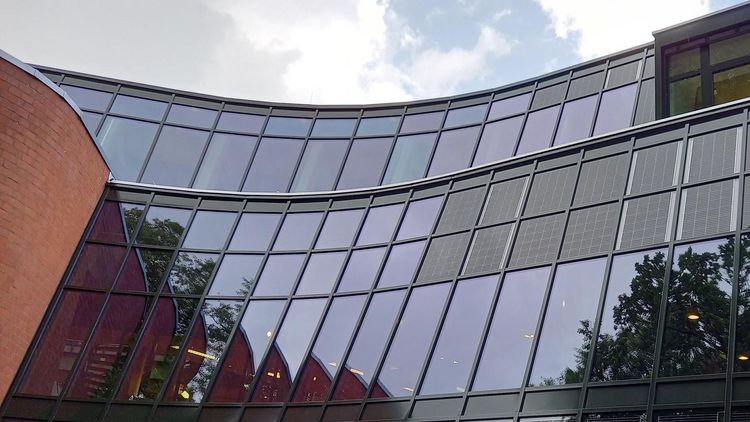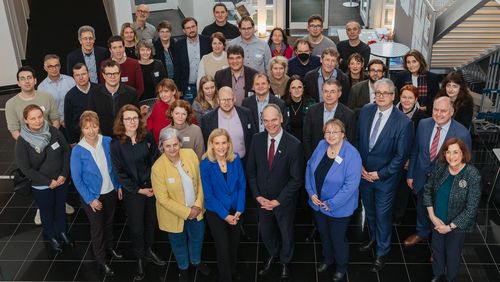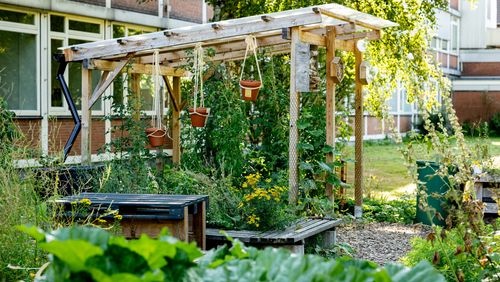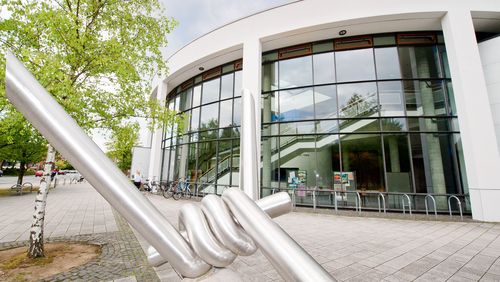A reliable basis for making climate-friendly decisions within the university has been created with the latest release of the greenhouse gas report. Emissions have risen slightly in comparison to 2019, also due to the university's expansion.
The University of Oldenburg's second greenhouse gas balance report is now available. Climate Protection Manager Anna Krämer presented the results for the year 2022 to the Senate yesterday and presented them to the university public today. For the first time, this allows a comparison with the years 2019 and 2020, which were considered in the first greenhouse gas balance published in spring 2022.
According to the new report, the university's total emissions last year were 22,888 tonnes of carbon dioxide equivalents. This represents an increase of 1,510 tonnes, or about seven per cent, compared to 2019. "This increase is mainly due to the fact that a new combined heat and power plant went into operation at the Haarentor site in 2021, which runs on natural gas and is used for heat and electricity production at the same time," Krämer explains.
Another factor is the emission factors used for electricity: due to the nuclear phase-out, coal again has a higher share in electricity generation, which has increased the emissions per kilowatt hour in the federal electricity mix. The continued growth of the university also has an impact: on the one hand, the net area increased, and on the other hand, there is more energy-intensive research.
Feasibility analysis for more climate-neutral heat supply
"The new combined heat and power plant allows the university to produce and use electricity and heat directly on site," explains Jörg Stahlmann, the university's Vice President for Administration and Finance. He says that operating the cogeneration plant with natural gas is particularly suitable for a transitional period to efficiently supply existing buildings with heat and electricity.
The decision to build a modern and efficient combined heat and power plant to supply the buildings on the Haarentor campus was also made in 2017 from an economic point of view: "The costs pay for themselves in less than three years," says Stahlmann. Alternatively, the combined heat and power plant could be operated with biogas or hydrogen, which, however, is not yet available. A feasibility study is now being conducted to see how the university's heat supply can be made more climate-neutral in the future.
According to the greenhouse gas balance, building energy accounts for the largest share of emissions: This item is responsible for around 74 percent of total emissions. "The importance of this field of action has thus even increased compared to 2019," reports Krämer. In second place is the area of mobility - consisting of the categories business trips, semesters abroad, everyday mobility and vehicle fleet - which is responsible for just under 25 percent of emissions.
More electricity from renewable sources
"Regrettably, short-haul flights for business trips increased slightly, and private motorised transport also exceeded the 2019 figures," Krämer continued. Overall, emissions in the area of everyday mobility almost returned to pre-pandemic levels. A mobility survey, the results of which will be presented on 21 September, shows that even among those who only have a short way to the university, many regularly take the car.
Another result of the greenhouse gas balance: it is true that paper consumption is falling due to digitalisation. But this saving is not very noticeable because additional tablets, laptops and monitors have been purchased in return.
In recent years, the university's supply of electricity from renewable sources has more than doubled, but is still in the single-digit percentage range: photovoltaic systems covered 3.3 per cent of the electricity demand in 2022. In 2019, it was still 1.5 per cent.
Goal: climate neutral by 2030
"Even though the current greenhouse gas balance has not yet developed as we would like, we can see that the balance is an effective controlling tool," emphasises Jörg Stahlmann, Vice President for Administration and Finance. "Furthermore, it provides us with a solid data base for decision-making."
The University of Oldenburg has set itself the goal of being climate neutral in 2030. The basis for this is a climate protection concept adopted at the beginning of 2023, which, among other things, provides for the submission of a greenhouse gas balance every two years. Important building blocks on the way to climate neutrality are the energy-efficient refurbishment of buildings and supplying the university with renewable energy.
Feasibility studies are currently being conducted to determine whether it is possible to supply the various locations with heat pumps and which measures can be used to expand the share of renewable energy. According to the "Climate Neutral State Administration Strategy" of the Lower Saxony Ministry for the Environment, Energy, Building and Climate Protection, the energy supply of new buildings must already be planned to be climate neutral.




